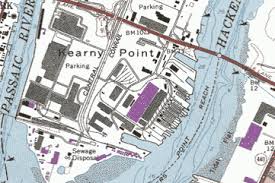By by Dorothea Walker
Ah, yes! Ellis Island! In most instances it meant a new beginning for a great many people.
The United States was a fairly young country, about 200 years old when immigration was at its s highest point. My mother came over from Mandal in1903—two years before Norway won her independence from Sweden. She left Norway for a very different reason than most immigrants.
My mother, Amalie Loland, had been sent to Christiania (now Oslo) to school. My grandfather believed that all five daughters should be trained or educated to the full extent of their abilities. My mother, the fifth child, was the most academic. So she was sent away for her education. While at school, she met Tønnes Tjølsen, a painter. He introduced her to the theater, opera, concerts, the arts and also to fine cuisine. At the end of the year, he asked her to marry him.
Upon returning home, she confronted her father and asked for his permission to marry Tønnes. He not only refused to give his permission, but suggested she marry the son of their next door neighbor, a man of substance. She refused to accept his marriage suggestion on the grounds hat she did not love Thorvald, the neighbor’s son. By now, she decided that there was nothing left for her in Norway, so she decided to go to America where two of her sisters lived.
In 1912, her father died, and Amelie lost no tie renewing her friendship with Tønnes. An arrangement was made that Tønnes was to come to the United States. They would get married. Then both of them would return to Norway where he had a thriving business. There were married, but Amerlie refused to go back to Norway. The following years were difficult as Tønnes spoke no English. However, World War I found him working at the Federal Shipbuilding Company in Kearny, New Jersey. He always had the dream of “going home to Norway.” Of course, we did not go. In fact, we never did go to Norway as a family.
We always celebrated Christmas the Norwegian style. On the Sunday before Christmas, my father and I would make heart-shaped paper baskets to hang on our tree. My mother baked fattigman, krumkake, Berliner kranser, borstabler, mandelstenger, sandkaker and other goodies.
On Christmas Eve, my parents would have the traditional lutefisk and julegrøt for lunch. I disliked both of these traditions. In the early evening, our Norwegian friends and relatives came over from Brooklyn to our home in Jersey City. The Christmas tree was placed in the middle of the room. The candles were lit (with a bucket of water nearby). Then we all held hands around the tree and sang Norwegian songs like Jul med din glede og barnlige lyst, and Jeg er så glad hver jule kveld.
After all the candles had been distinguished and the tree put back in the corner, out came the Norwegian delicacies my mother had labored over for weeks—fiske boller, sylteflesk, potete kaker, eggost, knekke brød, gjeit ost, vørtekake, nøkkelost, tyttebær, rød grøt, kransekake and appel stenger. And plenty of coffee. When I was a small child, my father would dip a sugar lump (sukker bite) in coffee for me.
My mother adopted American customs fairly well. But my father, although an American citizen of necessity, was Norwegian at heart. In my early school days, teachers told the parents to speak English at home. My father refused to do so. We not only spoke Norwegian at home, but he had his other send both primers and readers so that I could learn to read and write in Norwegian.
I might not have been subjected to religion but for the fact that one Sunday morning a group of children and adults walked along our street—all of them speaking Norwegian. My mother spoke to them and they offered to take me to a nearby Norwegian Evangelical Free Church Sunday School. My father hesitated because we were Lutheran. My mother prevailed, saying that only good things could come from the pulpit.
In the ensuing years, my father established himself in a contracting business which handled residential and commercial industrial work.
Years later, after my mother had passed away, my father went “back to Norway”—there to pursue his literary interests. He lived out his years at the home of the Nobel Prize winner, Knut Hamsun at Grimstad, Norway where he died in 1968.

